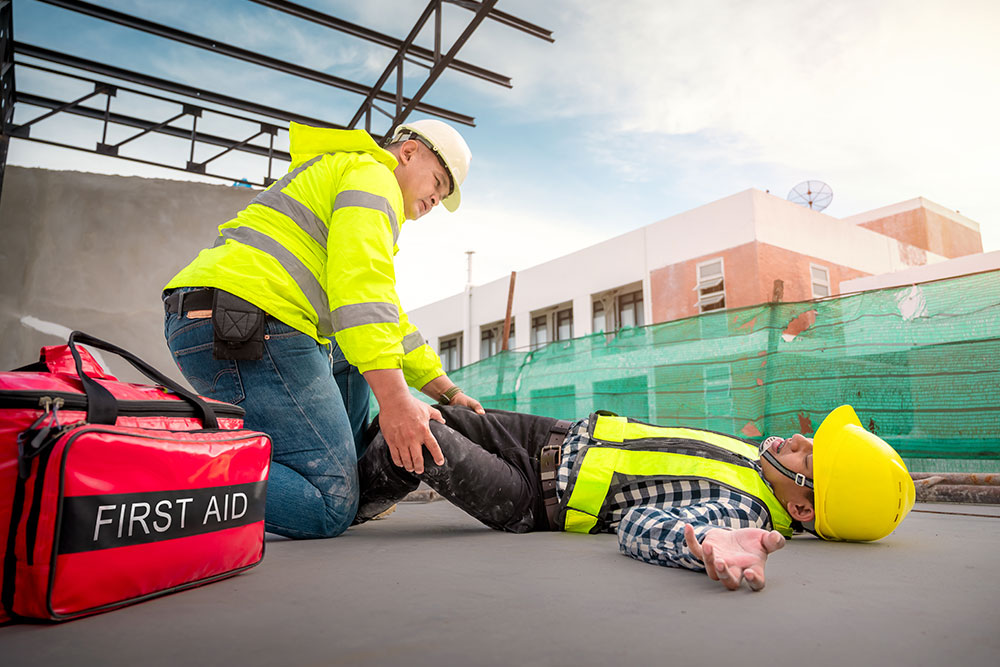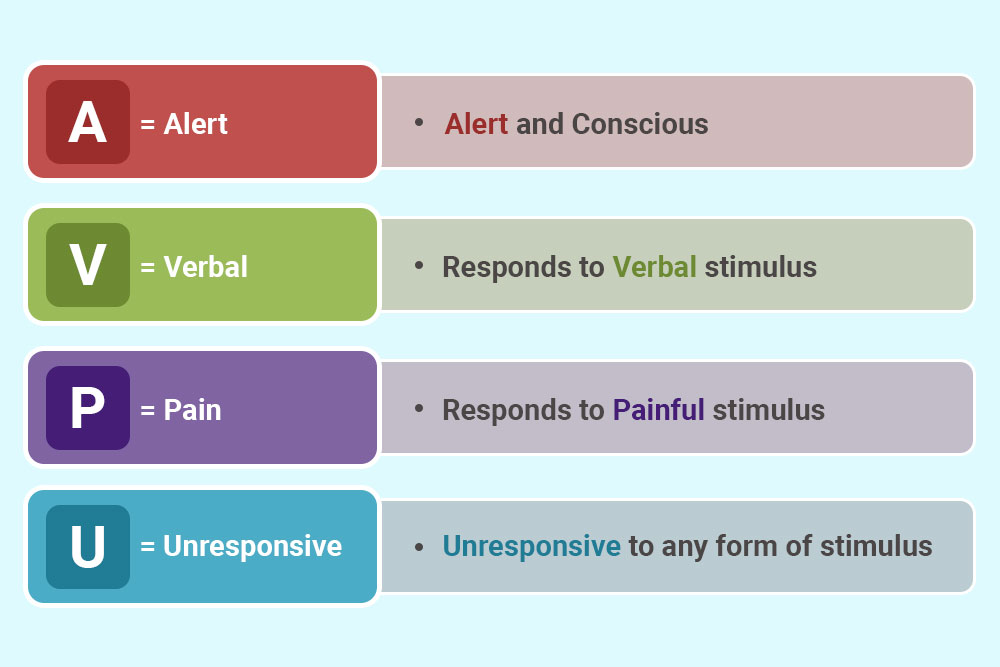
Have you ever had to use a computer while a colleague was watching?
You might’ve been hammering out 120 words a minute just a moment ago, but typing the word ‘and’ suddenly becomes a challenge because your co-worker is hovering over your shoulder.
If this sounds familiar, you’re not alone. People don’t respond well to pressure.
Now imagine trying to administer critical first aid in an emergency.
Even trained individuals need to use shortcuts like AVPU in first aid to help them know what to do when every decision could be the difference between life and death.
Read our guide to learn what AVPU stands for and how you can use it to know what to do when someone’s seriously injured.
What does AVPU in First Aid Stand For?
AVPU is one of the many acronyms used in first aid to help people remember what to do and when in emergencies.
Each letter in AVPU corresponds with a critical check any first aider should perform on a casualty to determine their consciousness level and determine what treatment is needed.
A – Alert – First, check if a casualty can talk and respond to questions promptly. They can only be defined as ‘alert’ if they can sensibly answer questions.
V – Vocal Command – If the casualty isn’t talking, give them a vocal command and check for any response.
P – Pain/Pressure – If you get no response from your spoken commands, move on to a pain stimulus, such as squeezing the casualty’s fingers.
U – Unresponsive – A lack of response to the previous three checks qualifies the patient as unresponsive and needing immediate medical care. You should put the casualty into the recovery position and contact the emergency services urgently if you haven’t already done so.
Why Should You Perform an AVPU Survey?
The AVPU system is a simplified version of the Glasgow Coma Scale (GCS), a clinical test used to determine a patient’s level of consciousness after a brain injury.
AVPU checks and the Glasgow Coma Scale help first aiders and medical professionals decide on the level and urgency of treatment needed. The less responsive a casualty is, the more pressing the medical care required.
AVPU is the preferred survey for first aiders and paramedics because of its simplicity. There are four outcomes, as opposed to the 13 of the GCS, so it’s easy for people to follow in emergency situations where decisions must be made quickly.
When Should You Perform an AVPU Survey?
Medical professionals often describe their initial actions as an investigation when approaching a casualty. They need to assess the situation and discover the cause of the injury before deciding on the best course of action.
An AVPU in first aid survey should be one of the first checks you perform on a casualty immediately after you’ve completed a primary survey, determining there’s no further danger.
If your patient qualifies as anything below ‘alert’ on the AVPU scale, you need assistance from medical professionals. And any patient determined to be ‘unresponsive’ on the AVPU scale needs medical attention immediately.
How Do You Perform an AVPU Survey?
The AVPU system is relatively straightforward, but there are a few things you need to keep in mind when using it.
(If you’re more of a visual learner, you can watch a medical professional demonstrate the AVPU system.)

A – Alert
The first check should consist of questions assessing the casualty’s level of consciousness. You should avoid asking yes or no questions. Instead, ask questions that require a little more cognitive effort, such as:
- What’s the time?
- What’s the date?
- Where are we?
- What happened?
The answers don’t really need to be correct. A patient can still count as alert even if they’re confused or disoriented. You’re checking the casualty’s ability to respond, not quizzing them.
If the patient can’t respond to your questions, you should move on to vocal commands.
V – Vocal Commands
Suppose the casualty can’t answer your questions promptly and with discernible words. In that case, they qualify as below alert and the emergency services should be called.
You should continue to speak to them, however, to determine their level of consciousness. Give them vocal commands such as:
- Open your eyes
- Tell me your name
- Move your arm (or other body part)
Ideally, a casualty will respond to your commands with the correct action. But there might be other non-verbal responses. Monitor the patient for any of these reactions to your instructions:
- Eye movement
- Grunts or moans
- Basic motor functions, such as limb movement
If there’s no response, consider causing a little bit of pain. (If it helps you feel less cruel, you can refer to the next step as ‘pressure’.)
P – Pain
Be cautious before testing for any response to pain, as it’s not always safe to do so.
But if you’re sure the casualty is not alert or showing any response to your voice, it’s usually best to continue with the AVPU survey.
Try to get a response by using a pain stimulus technique, such as:
- Squeezing the casualty’s fingers
- Applying pressure to the bed of the casualty’s fingernail
- Pinching the casualty’s ear
A conscious patient should be able to locate the pain and will attempt to push you away or move to protect themselves. However, it’s more likely the casualty will respond with an involuntary grunt or movement.
If there’s no response whatsoever, you know the situation is critical.
U – Unresponsive
A casualty is considered unresponsive if there is no response (eye movement, limb movement or vocalisation) to your previous checks.
Unresponsive casualties should be put into the recovery position immediately to keep their airwaves clear. As urgent medical care is needed, you must also contact the emergency services as soon as possible (or ask someone else to) if you haven’t already.
Should You Only Call the Emergency Services if a Casualty is Unresponsive?
You must contact the emergency services if you determine any casualty to be unresponsive. However, you should call an ambulance for any outcome below the alert on the AVPU scale.
If a casualty registers as less than alert, it indicates they might have suffered brain damage and will need professional help. So always play it safe and call the emergency services unless you’re sure the patient is fully alert and your first aid skills are sufficient.
Where You Can Learn Other First Aid Essentials
AVPU is just one tool a first-aider can use to make a difference in an emergency. If you want to learn more about first aid essentials, online training could be right for you.
Our First Aid at Work course gives you an awareness of emergency care and the most essential first aid procedures. You’ll learn how to treat common injuries and respond to various first-aid emergencies. And since the course is entirely online, it’s an ideal starting point to refresh the knowledge gained during your original practical first aid training to keep your skills sharp.





















































































































































































































































































































































































































































































































































































































































































































































